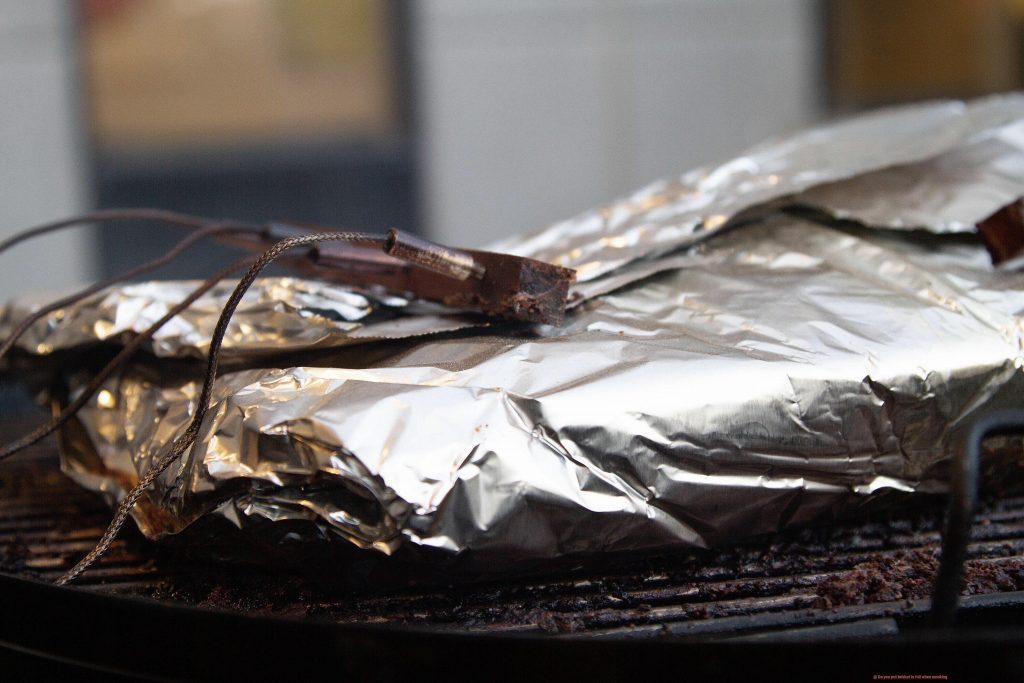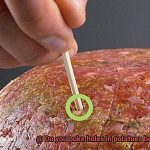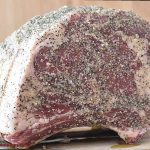It’s that time of year again – the sun is shining, the birds are singing, and the smell of barbeque is in the air. As you prepare to smoke your brisket, you may be wondering whether or not to wrap it in foil. It’s a question that sparks fierce debates among pitmasters and backyard grillers alike.
On one side of the argument are those who swear by wrapping their brisket in foil. They claim that it helps to keep the meat moist and prevents it from becoming too charred on the outside. Others argue that leaving your brisket unfoiled allows for a more authentic barbeque experience and better flavor development.
So, who’s right? Well, as with many things in life, there’s no one-size-fits-all answer. The decision to foil or not to foil ultimately comes down to personal preference and what you hope to achieve with your smoked brisket.
In this post, we’ll explore both sides of the debate and weigh the pros and cons of each method. We’ll also provide tips on how to make the best choice for your specific needs so that you can create mouth-watering brisket that will have everyone coming back for seconds.
So, grab your tongs and fire up your smoker – let’s settle this age-old debate once and for all.
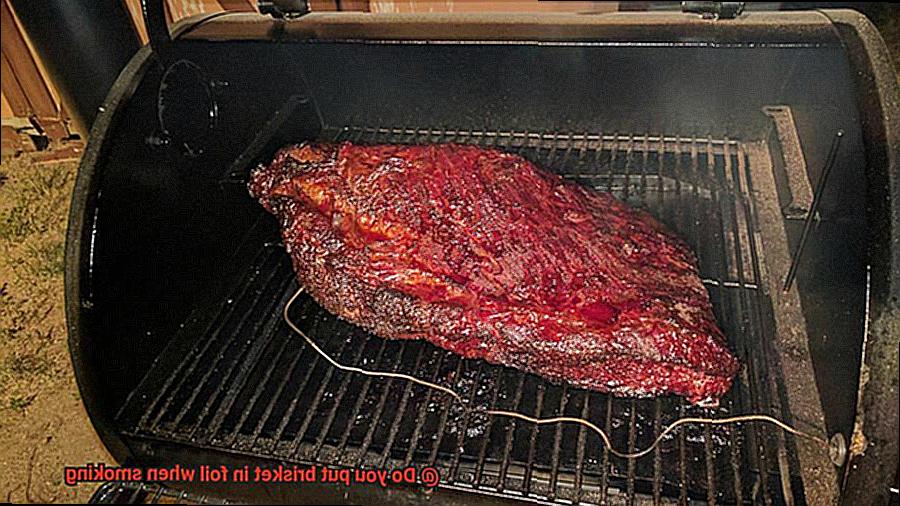
Contents
Different Schools of Thought on Smoking Brisket
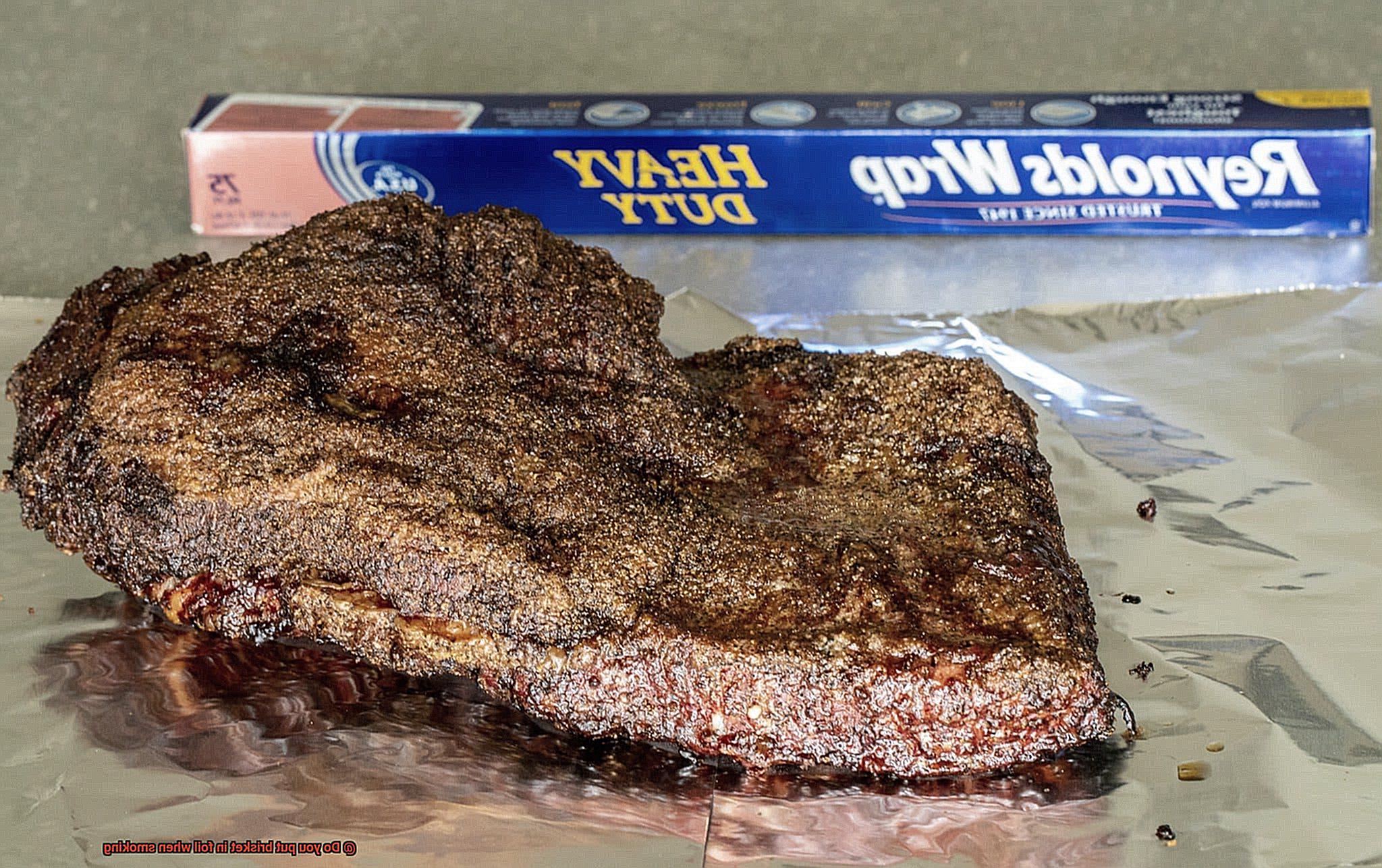
When it comes to smoking brisket, pitmasters have strong opinions on whether to wrap the meat in foil during the cooking process. Some swear by it, while others argue it is unnecessary or even detrimental to the final product. Let’s delve into the different schools of thought on this contentious issue.
Proponents of foil-wrapping argue that it can prevent the meat from drying out during a long smoke. By creating a seal around the meat, foil traps moisture and prevents it from evaporating as the brisket cooks. This results in a tender, juicy final product. Additionally, wrapping your brisket in foil can speed up the cooking process by creating an “oven” effect where heat trapped inside helps cook the meat more quickly.
However, some pitmasters believe that wrapping the meat can interfere with the development of a good bark – a flavorful, crispy crust that forms on the surface of the meat during smoking. Foil traps moisture on the surface of the meat, preventing it from drying out and forming a good bark.
Moreover, there is debate over whether or not foil-wrapping can lead to a mushy texture in the final product. Some pitmasters argue that by trapping moisture inside the foil, you’re essentially steaming the meat instead of smoking it. This can result in a texture that’s too soft or mushy for some tastes.
So what should you do? Ultimately, whether or not to wrap your brisket in foil comes down to personal preference and experimentation. If you’re short on time or want a more tender and moist brisket, then wrapping it in foil can be a good option. However, if you prefer a firmer texture and a smokier flavor, then leaving it unwrapped may be your go-to method.
It’s also essential to consider the type of brisket you’re cooking. A leaner cut may benefit from being wrapped in foil to prevent it from drying out, while a fattier one may not need it as much. Additionally, the thickness of the brisket and the temperature at which it is smoked can also impact whether or not to use foil.
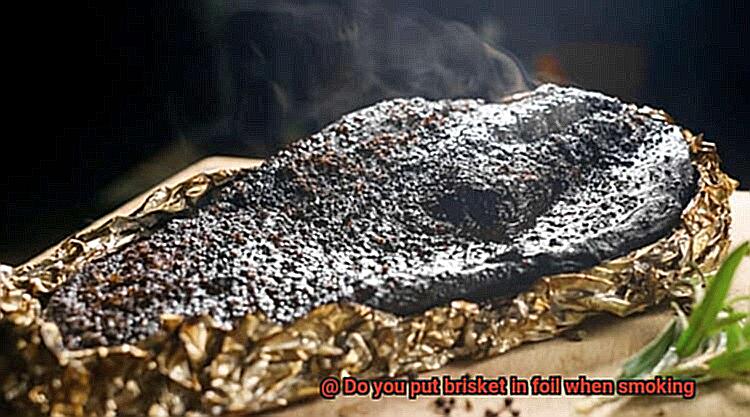
Do You Put Brisket in Foil When Smoking?
As any seasoned smoker knows, brisket is the ultimate meat to smoke. However, when it comes to smoking a brisket, one of the biggest debates among pitmasters is whether or not to use foil. As an expert in this field, I’m here to give you the lowdown on the pros and cons of using foil during the smoking process.
One of the most significant advantages of wrapping your brisket in foil is that it helps retain moisture and speeds up the cooking process. When the brisket is wrapped tightly in foil, it creates a steamy environment that helps break down connective tissues and tenderize the meat. This is especially useful if you’re trying to produce consistent and fast results for competition BBQ teams.
On the flip side, some pitmasters argue that using foil can have its drawbacks. They believe that the foil can act as a barrier that prevents smoke from fully penetrating the meat, resulting in a less flavorful end product. Furthermore, some feel that wrapping the brisket in foil can make it too soft, affecting its texture and chew.
So, what’s the verdict? Ultimately, whether or not to use foil when smoking a brisket is a matter of personal preference and your desired outcome for the meat. Some pitmasters will wrap their brisket in foil for part of the smoking process and then remove it later on for a crispy bark. Others may choose to avoid using foil altogether and let their brisket smoke uncovered for the entire cooking time.
Pros and Cons of Wrapping Brisket in Foil
If you’re a fan of smoking brisket, the debate on whether to wrap it in foil or not may have left you scratching your head. Luckily, as an expert in the field, I’m here to break down the pros and cons of this technique.
Starting with the pros, wrapping brisket in foil can help speed up cooking time by retaining heat and moisture. The foil acts as an insulator, trapping steam inside the meat, resulting in a faster cooking process. Additionally, it can increase tenderness by breaking down tough connective tissue and fat. When wrapped in foil, the meat cooks in its own juices, further tenderizing it. Finally, this technique allows for added flavor infusion, as you can add marinades or spices to the foil before wrapping the meat.
However, there are also some cons to consider. Wrapping brisket in foil can cause moisture loss if left wrapped for too long. After a certain point, steam trapped inside the foil will start to condense and drip back onto the meat, causing it to become soggy and lose flavor. Moreover, when wrapped in foil, the bark on smoked brisket can soften due to excess moisture, resulting in a less crispy texture. Lastly, this technique also means that your brisket won’t absorb as much smoke as it would if left unwrapped, resulting in a less smoky flavor.
Factors to Consider When Deciding Whether or Not to Use Foil
If you are, then you know that the question of whether or not to use foil is a hotly debated topic among pitmasters. As an expert on this topic, I’ve compiled a list of factors to consider when deciding whether or not to wrap your brisket in foil.
First and foremost, using foil can speed up the cooking process. When wrapped tightly, the brisket will cook faster due to the trapped steam and heat. This can be a lifesaver if you’re short on time or need to serve your guests quickly. However, some argue that using foil can also compromise the flavor and texture of the meat. When wrapped in foil, the meat can become steamed rather than smoked, resulting in a softer texture and less smoky flavor.
Another crucial factor to consider is personal preference. Some people simply prefer the taste and texture of brisket that has been smoked without foil. It’s important to take your own taste preferences and those of your guests into account when deciding whether or not to use foil.
The equipment you have available can also play a role in your decision. If you have a smoker that maintains a consistent temperature and humidity level, you may not need to use foil. However, if you’re using a less sophisticated smoker or grill, wrapping the brisket in foil can help to maintain an even temperature and prevent drying out.
Personal Preference and Experimentation
When it comes to wrapping brisket in foil, pitmasters are divided. Some believe that it helps to retain moisture and speeds up the cooking process, while others prefer to let the meat cook unwrapped for the entire duration of smoking. But did you know that the type of smoker you’re using can also play a role in your decision? For example, offset smokers may benefit from wrapping as it helps even out temperature fluctuations and prevent burning. On the other hand, pellet smokers maintain a consistent temperature throughout, making wrapping less necessary.
But what about flavor and texture? While some pitmasters swear by wrapping, others argue that it compromises the flavor and texture of the meat. This is why personal preference and experimentation are crucial. Factors such as rubs, sauces, and wood choice also play a significant role in the final taste of your brisket.
So how do you go about experimenting? One suggestion is to try both methods – wrapping and unwrapping – to see which produces the best results for your taste. Don’t be afraid to mix and match different rubs, sauces, and wood combinations until you find your perfect balance.
How to Wrap a Brisket in Foil
For pitmasters, wrapping brisket in foil is a common technique known as the Texas Crutch. It’s a great way to speed up the cooking process and keep the meat moist. Here are five steps to help you wrap your brisket in foil while smoking:
- Wait for the right time: The initial hours of smoking are critical for forming a good bark on the outside of the meat. So, wait until your brisket has been smoking for a few hours before wrapping it in foil. That way, you won’t risk losing that bark.
- Use heavy-duty aluminum foil: Make sure to use wide enough foil to cover the entire brisket and keep all the juices inside. This is crucial for keeping your meat moist.
- Add flavoring: Before wrapping your brisket, consider adding some beef broth or apple cider vinegar to the foil. This will infuse additional flavor into your meat and make it taste even better.
- Wrap it tightly: Place the brisket in the center of a large piece of heavy-duty foil and fold one side over the top of the brisket. Then, fold over the opposite side and continue folding up each side until the brisket is fully wrapped in foil. This will help lock in moisture and keep your meat tender.
- Return it to the smoker: Once your brisket is wrapped in foil, return it to the smoker and continue cooking until it reaches an internal temperature of around 195-205°F. This should take another 2-3 hours depending on your smoker and cooking temperature.
It’s important to note that wrapping your brisket in foil can soften the bark on your meat. If you prefer a crispy bark, consider skipping this step or only wrapping your brisket for a shorter period of time.
Tips for Perfectly Smoked Unwrapped Brisket
It allows for a crispy bark and smoky flavor while maintaining the meat’s tenderness. If you want to achieve the best results when smoking an unwrapped brisket, here are some tips to follow:
Tip 1: Choose the Right Cut of Meat
Selecting the right cut of meat is crucial. Look for a brisket with even marbling throughout and a good fat cap on top. This ensures that the meat stays moist and flavorful during the smoking process.
Tip 2: Season Generously
Seasoning the brisket with a dry rub is essential to create a flavorful crust. Many pitmasters prefer to use a simple rub consisting of salt, black pepper, and garlic powder. However, you can also experiment with different seasonings and spices to find the perfect flavor profile for your taste buds.
Tip 3: Maintain Consistent Temperature
Consistency in temperature throughout the smoking process is key to achieving perfectly smoked unwrapped brisket. Aim for a temperature between 225-250°F and avoid opening the smoker too often as this can cause fluctuations in temperature.
Tip 4: Spritz with Apple Cider Vinegar
Once the internal temperature reaches around 160°F, spritzing the brisket with a mixture of apple cider vinegar and water will help keep it moist and add some tangy flavor.
Tip 5: Let it Rest
After smoking, let the brisket rest for at least 30 minutes before slicing. This allows the juices to redistribute throughout the meat, resulting in a tender and juicy brisket.
Remember that patience is key when smoking brisket. It can take anywhere from 10-16 hours to smoke a brisket depending on its size and thickness. Resist the temptation to check on the meat too often as this can cause heat loss and ultimately result in an unevenly cooked brisket.
_Ldg73DumjI” >
Conclusion
When it comes to smoking brisket, the foil debate has been a hot topic for years. The decision to wrap or not to wrap is ultimately up to you and your desired outcome. Those in favor of foil argue that it keeps the meat moist and prevents charring, while others believe an unfoiled brisket creates a more authentic BBQ experience with better flavor development.
It’s important to consider factors like cut of meat, smoker type, temperature, and seasoning when deciding whether or not to use foil during smoking. Foil-wrapping can speed up cooking time, increase tenderness, and allow for additional flavor infusion. However, it also runs the risk of moisture loss and compromising the bark’s texture and smoky flavor.
The key to smoking brisket is experimentation. Try both methods – wrapped and unwrapped – to see which produces the best results for your taste buds. Don’t be afraid to mix and match different rubs, sauces, and wood combinations until you find your perfect balance. And always remember: patience is crucial when smoking brisket.

